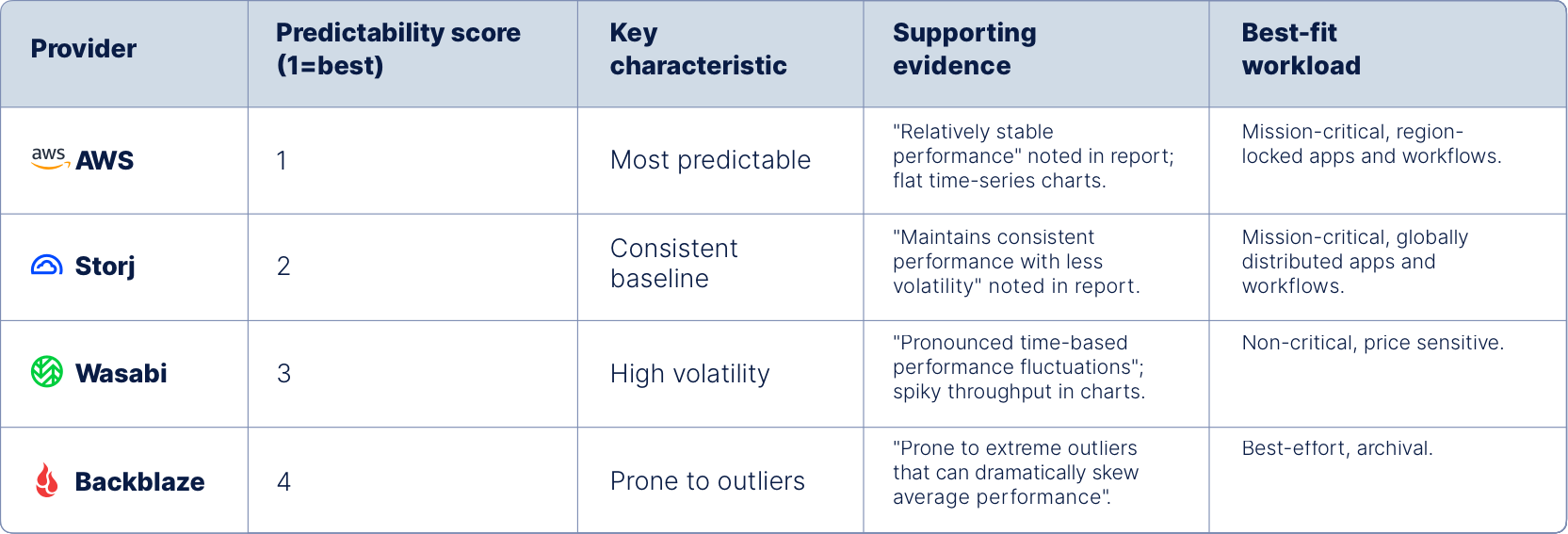
Live Session:
See how the cloud finally works for media workflows





│з│┘┤╟░ї┬стАЩs distributed cloud architecture splits and encrypts data into smaller segments and stores them across thousands of globally distributed nodes. Each download automatically retrieves segments from the fastest, nearest nodes, maximizing throughput without multi-region replication or edge caching.
Yes. The performance benchmarks on this page come from an independent test by IDS (2025). Tests compared ▓╗┴╝╤╨╛┐╦ї against AWS and Wasabi using identical workloads across multiple regions, file sizes, and times of day. ▓╗┴╝╤╨╛┐╦ї delivered up to 16.7├Ч faster cross-region throughput without replication.
Unlike traditional region-bound cloud storage, ▓╗┴╝╤╨╛┐╦ї continuously monitors node health, latency, and bandwidth to deliver consistent, low-latency performance. The network dynamically selects the best-performing nodes at any given momentтАФminimizing performance drops caused by congestion or distance.
Yes. ▓╗┴╝╤╨╛┐╦ї scales horizontally. As usage grows, more nodes participate in parallel transfers, ensuring consistent throughput for large datasets, global collaboration, or simultaneous users.
Performance depends on multiple factors: your network bandwidth, concurrent transfers, ISP routing, and distance to available nodes. │з│┘┤╟░ї┬стАЩs parallel, multithreaded transfer engine optimizes for these variables automatically to maximize real-world throughput.
Global Collaboration тАУ Consistently performant and highly available everywhere; ideal for teams that need reliability and reach.
тАНRegional Workflows тАУ Secure, sovereign, and high-performance with edge proximity for low latency.
тАНActive Archive тАУ Cost-efficient with on-demand access; optimized for affordability over peak performance.
▓╗┴╝╤╨╛┐╦ї continuously validates data integrity using cryptographic checksums and erasure coding. Each file segment is periodically verified and automatically repaired if any degradation is detectedтАФprotecting against bit rot, silent corruption, and hardware decay common in traditional storage systems.
│з│┘┤╟░ї┬стАЩs distributed redundancy ensures availability even during outages. If a node fails, the system retrieves redundant segments from other nodes, maintaining uptime and performance without manual intervention.
▓╗┴╝╤╨╛┐╦ї delivers exceptional throughput for large objects (e.g., multi-GB video, imagery, or datasets). For workloads with many small files, batching or parallel transfer strategies are recommended for optimal efficiency.
Yes. You can run │з│┘┤╟░ї┬стАЩs open benchmark tools using your own files and environment to validate upload and download speeds firsthand. Visit the IDS benchmark report for test methodology or contact our team to run a proof-of-concept.